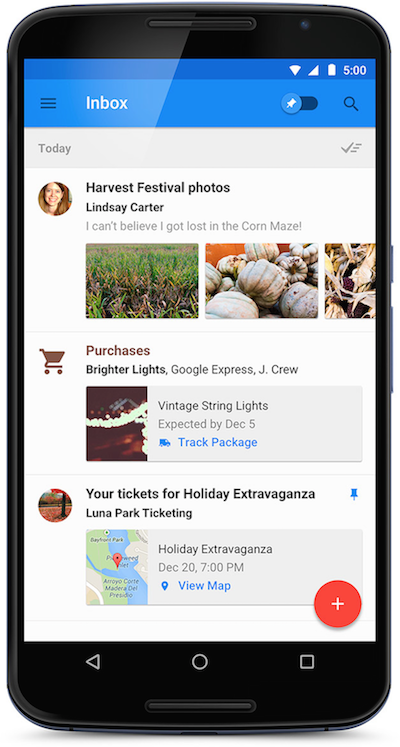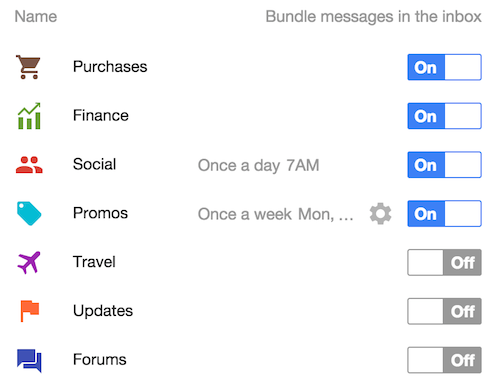 Eliza Gniadek
created
edited
Eliza Gniadek
created
edited
Google Inbox is coming! What is it and what does it mean for you?
Back to list of articlesEveryone in email marketing needs to know about Google’s latest innovation. This is the first in a two-part series taking a look at the changes that are coming to the way Gmail works and how Inbox might influence the way you communicate with your subscribers.

Good news for email marketing. Google has recently come up with the new Inbox app to be used both on mobile devices and with Chrome. The idea behind this app is that it presents the contents of your regular inbox in a new, organized way, also adding some original and helpful features. One of the primary new options is the ability to choose a „skin” which enhances the way email is presented and categorized. Clever and visually attractive? Check. But what can your business do with the new app?
Google strikes again
Probably the most outstanding feature of Inbox is the Highlights. The messages that are received by Inbox may contain sliding bars under the subject of the message, which will show the most important contents inside. The contents that are displayed are interactive and may include YouTube videos, pdf’s, information about product price (pictures included), check-ins, and other things taken from the mail.
Google has also made this feature customizable. Developers may choose which content to display on Highlights, and can be provided with codes that help integrate Inbox with other Google services. Basically, it means that people will see what’s inside the email without even opening it. Sounds like a great opportunity for email marketers, as it is a step toward breaking the barrier between the customers and the offers they receive.

Source: Gmail Blog
But that's not all...
Another important feature Inbox introduces is Bundles. Gmail users are already familiar with email categories that classify messages by their type and origin (e.g. social media-related). This feature goes two steps further by enabling the users to take advantage of a more detailed categorization and auto-adaptation of the app.
The categories can be things like travel, purchases, social, forums, or – importantly for marketers – promotions. Messages of one type will appear in appropriately named bundles which makes skimming through offers really easy without leaving main inbox screen in web type. Based on the Bundles created by the user, Inbox will direct new messages to different categories by the way of adaptation.

Source: Gmail Blog
Using categories to better organize your mail
Inbox makes all messages equally important. They only differ in categories, which can be modified by the users. If your company sends newsletters, they will probably make their way to the Promotional category. This means that they will not bother their recipients the way they would if mixed in a traditional way with email important to the user as they will land in a separate bundle.
It seems that the new release from Google will be well accepted on mobile devices as it includes some helpful features like Reminders and Assists. Users can write reminders just the way they would by writing up a “to do” list, while Assists enhances this feature by adding selected information, including phone numbers of services, maps to restaurants, etc. This simple “call and response” function is potentially of great marketing value, too.

Source: Gmail Blog
What it means for email marketers
Considering the basic features of Inbox, developers will surely find new ways to promote their businesses through it. It is worth considering letting your business appear on various Google services, as they may become a powerful combination while accessed from Inbox. Since for now the application is available only by invitation, there is certainly more “real-life” insight to the app yet to come.
Time will tell exactly how email marketers will adapt to the challenges and opportunities presented by Google Inbox but its arrival is another reminder of the ever-changing nature of the business landscape. Finding new ways to reach your customers and constantly monitoring the effectiveness of existing methods must always be front and center in your marketing strategy.
If Google Inbox proves to be a success - and, given Google’s track record, you would be foolish to bet against it - you can be sure that other large email service providers will be quick to offer their own versions. Always be ready to adapt nearly every aspect of your email campaigns to make the most of new technologies and channels that are always just over the horizon.
Look for more information about what Google Inbox means for email marketers in Part 2 of this post next week!

